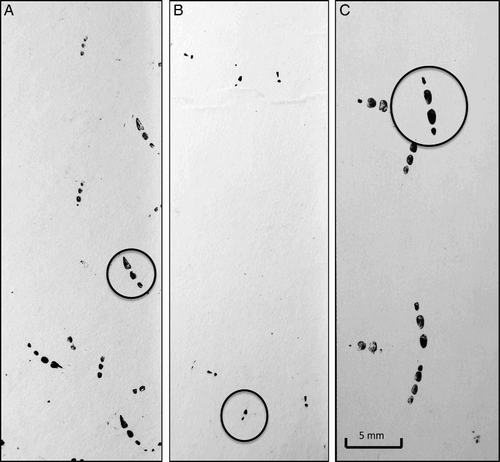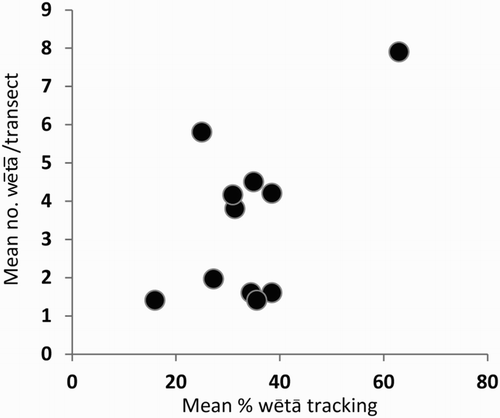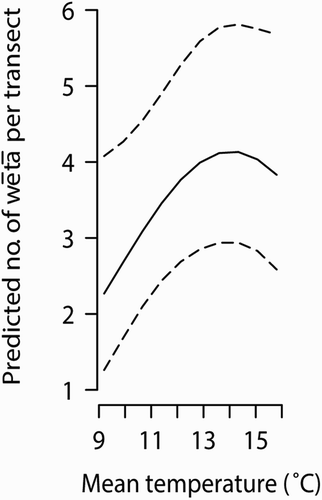Figures & data
Figure 1. Examples of wētā metatarsal footprints recorded from captive wētā: A, Tallitropsis sedilloti, B, Pleioplectron sp., C, Hemiandrus sp. The metatarsal prints are circled, showing the key differences between the species: Pleioplectron sp. only track two of the metatarsal pads, while T. sedilloti and Hemiandrus sp. lagging metatarsal pads are shaped differently (triangular for T. sedilloti and oval for Hemiandrus sp.).

Figure 2. Mean (±SE) percentage footprint tracking rate (A), and mean number of cave wētā, Pleioplectron sp., per spotlight transect (B), on four sampling grids during three sampling sessions, Eglinton Valley, November 2012 to February 2013. Transects in Grid 2 were not sampled in December.



